-
AI FactoryAI FactoryAI Factory – already hereThe AI Factory is no longer a concept — it’s a reality.

-
SolutionsSolutions
-
CompanyCompany
Time to Consider a Digital Twin?
Introducing the Digital Twin

At its core, a digital twin is a virtual model designed to accurately mirror a physical object or process. This concept harnesses the combined powers of data, algorithms, AI and the Internet of Things (IoT) to create dynamic digital simulations that update and change alongside their real-world counterparts.
As technology has advanced, so too has the sophistication with which these models can predict, enhance, or troubleshoot real world products and processes in a real-time simulation, leading to substantial improvements in efficiency and effectiveness of outcomes.
“The digital twin represents a fundamental shift in how we understand the relationship between the physical and digital realms, offering new avenues for innovation and problem-solving.” – James Governor
The History of Digital Twins

The origin of digital twins can first be traced back to the early days of space exploration. NASA pioneered this concept during the Apollo missions, where it employed basic yet effective forms of digital twins as part of its simulation techniques for mission operations.
“The digital twin is an integrated multi-physics, multi-scale, probabilistic simulation of an as-built system, updated using real-time data, sensor information, and service history.” – Dr. John Vickers
These simulations allowed engineers on the ground to predict potential issues and dynamically solve problems encountered by spacecraft in orbit.
This early application highlighted the potential of digital twins, acting as a primitive yet powerful decision-support tool, ensuring the safety and success of complex operations in unforgiving environments.
In essence, a digital twin serves not just as a bridge, or mirror between the physical and digital worlds but also as a platform for innovation, allowing us to foresee the consequences of decisions before they are made.
This powerful tool is integral to driving forward the industries of tomorrow, making it a cornerstone of modern engineering and operational strategy.
Adding AI to the Digital Twin
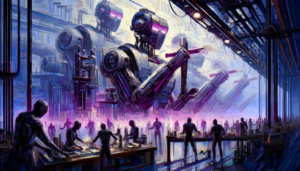
By incorporating AI and machine learning, these digital twins evolve from static models to dynamic systems that can predict wear and tear, adapt to changes in the production schedule, and suggest improvements.
For instance, if a particular part is identified as a bottleneck during production, the digital twin can help engineers analyze the root cause and test solutions virtually before implementing them in the real world.
Digital twins offer an ideal sandbox environment for training AI models. They provide a dynamic, data-rich setting to teach, test, and refine AI algorithms, crucial for applications like autonomous driving and other forms of autonomous operations.
They will continue to accelerate innovation not only by facilitating rapid product iteration but also by serving as a training ground for AI models, thereby enhancing both the virtual and physical aspects of product development.
Why Build a Digital Twin?

Accelerating Innovation and Results
Digital twins naturally drive innovation by providing a safe, cost-effective environment for rapid prototyping and iteration. This capability for example is crucial for industries like automotive and aerospace, where iterative design and innovation are key competitive advantages.
By enabling faster iteration cycles, digital twins allow companies to bring pioneering products to market more quickly than ever before.
“The digital twin concept goes beyond merely replicating a physical object in the digital realm; it provides a deeper understanding and insight into that object, enabling better decision-making and efficiency.”- Peter Mitchell
Economic Benefits
The economic benefits of implementing digital twins can be profound. By integrating digital twins into operations, companies can see a significant medium and long-term reduction in costs associated with operational downtime, repairs, and maintenance due to the predictive capabilities of the technology.
In the energy production industry, digital twins of wind farms can optimize maintenance schedules and operations to maximize output and minimize unplanned outages.
The efficiency gains from this accelerated processes translate into significant cost reductions through product development cycles.
Additionally, digital twins contribute to productivity and revenue growth by enhancing product quality and customer satisfaction.
A more reliable, well-maintained product reduces safety liabilities, warranty claims and service costs, while also improving brand reputation and customer loyalty. All positive effects on business outcomes.
What are the Popular Types of Digital Twins?
Digital twins are diverse and dynamic, applied across various industries to address unique challenges and optimize different processes.
Let’s take a look at some of the most prevalent types of digital twins and their applications across sectors.
Manufacturing
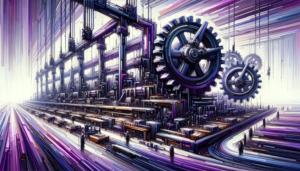
These are used extensively in the manufacturing industry to simulate products and production processes. A manufacturing digital twin can model an entire factory’s operations, including machines, workflows, and human interactions. This helps in optimizing production lines, reducing downtime, and enhancing the efficiency of manufacturing operations.
“The whole idea of being a factory foreman is once I get to perfection on the factory floor, I want every day to be exactly the same day. What the digital twin will be doing is looking for variations from that perfection and then giving us a heads-up to go fix it” – Michael Grieves
Medical & Healthcare
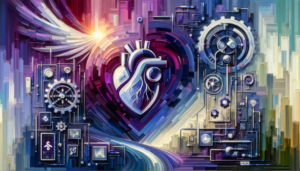
In healthcare, digital twins simulate human physiological and biological processes in humans to predict disease progression or the effects of therapeutic interventions on a patient. This technology is increasingly used for personalized medicine, allowing for treatments to be tailored to individual patients’ responses.
Automotive Industry
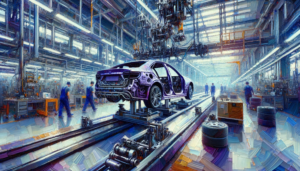
Automotive digital twins are used to design and test vehicles before they are built. They help in everything from aerodynamics and crash simulations to optimizing the manufacturing process. Automotive giants like BMW and Tesla use digital twins to streamline production and enhance vehicle performance and safety.
Urban Planning and Smart Cities

These digital twins model entire cities to optimize everything from traffic and transportation systems to energy usage and disaster management strategies. Urban planners use these models to simulate the impact of various policies and changes before implementing them in the real world, ensuring sustainability and efficiency.
Energy and Utilities Grid

Digital twins in this sector are used to optimize the operation and maintenance of assets like wind turbines, power plants, and grids. They help in predicting equipment failures, scheduling maintenance, and managing energy distribution efficiently to reduce waste.
Aerospace
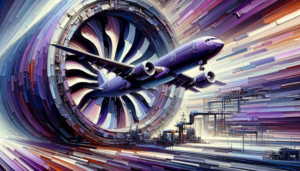
Extensively used by companies like Boeing and Airbus, aerospace digital twins simulate aircraft performance under various conditions. These advanced models enhance aircraft design, maintenance, and operation, significantly improving safety and efficiency in the aerospace industry.
Digital twins have largely replaced traditional physical wind tunnels. By simulating aerodynamics with high accuracy, digital twins reduce the need for costly physical prototypes and experimentation cycles. This transition allows for precise modeling of airplane performance, leading to substantial cost savings and accelerated development timelines.
Supply Chain & Transport

These models simulate logistics networks to optimize the movement of goods and materials. Supply chain digital twins help in scenario planning, risk management, and response strategies, making the supply chain more resilient to disruptions and delays.
Environmental Monitoring

These are used for environmental monitoring and management. They can model ecosystems or even entire planetary systems to predict environmental changes and help in making decisions that aim to protect and sustain the natural environment.
Robotics
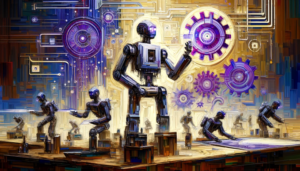
The evolution of digital twins in robotics is transforming the development and deployment of robotic systems. Digital twins create highly detailed and accurate virtual replicas of physical robots, allowing engineers to simulate and analyze robot behavior and performance in various environments.
Remarkably, thousands or even millions of robotic digital twins can experiment and train in parallel. This parallel experimentation allows for the aggregation and merging of all learned movements and activities into a final result, dramatically accelerating the development process of real-world robotics.
And, by predicting potential issues and enabling iterative refinements, digital twins improve the reliability and functionality of robotic systems.
The integration of Large Language Models (LLMs) further enhances these capabilities in robotics development by enabling more sophisticated simulations and optimizations.
LLMs contribute to better decision-making and problem-solving within the digital twin framework, ultimately advancing the field of robotics.
What Kind of Computing Infrastructure is Needed for Digital Twins?
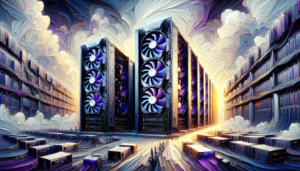
Digital Twin Platform – Software Requirements
A robust digital twin platform integrates advanced software solutions like NVIDIA Omniverse and OpenUSD with powerful hardware infrastructure to meet varying performance and budgetary needs.
“With Omniverse, we now have the technology to create new 3D worlds or model our physical world.” – Jensen Huang
NVIDIA Omniverse offers a collaborative platform for building and operating digital twins, leveraging real-time simulations and AI capabilities. OpenUSD, on the other hand, provides a scalable framework for creating interoperable 3D assets. Together, these tools enable precise, state-of-the-art high-fidelity digital twin creation and management.
Enterprise Grade GPU Infrastructure
NVIDIA GPU’s have been driving the current wave of innovations for digital twins. They are the world’s de facto standard to provide parallel processing power to digital twins, Private AI and 3D visual simulations.
By selecting NVIDIA as your GPU foundation, you’re traveling down a path of experience, leadership, optimized process, outcomes and results, while at the same time lowering the risk of unproven experimentation and technology.
“These new types of supercomputers are just coming online. This is as fresh a computing technology as you can imagine.” – Jensen Huang
The world leading NVIDIA DGX supercomputing systems deliver unparalleled computational power for large-scale simulations and AI training, without practical limits on performance and scale.
For more moderate needs, the NVIDIA L40s GPU offers a balance of performance and cost-effectiveness. Smaller setups, such as NVIDIA L4 GPU, cater to businesses seeking to implement digital twins on a budget without compromising essential capabilities.
This flexibility ensures that companies can choose the right configuration to match their size, objectives, and financial constraints at any given stage and project size.
Generative AI Models to Feed the Digital Twin
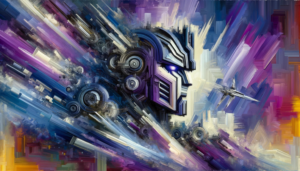
“Generative AI and digital twins can be used in combination to unlock insights and elevate their respective value. For example, large language models (LLMs) can create code for the digital twin, accelerating the development process and increasing effectiveness. This combination has the potential to unlock trillions in total economic value”– McKinsey & Company
By feeding these generative models into digital twins, companies can explore a wider range of possibilities and optimize their systems with greater precision. For instance, in autonomous vehicle development, Generative AI can simulate diverse driving conditions, helping to train AI models more effectively and safely.
This continuous loop of generating data, feeding it into the digital twin, and refining the AI models accelerates innovation, reduces risks, and enhances the overall accuracy and reliability of the digital twin.
An advanced and modern approach ensures that digital twins are not only reflective of current realities but are also predictive of future possibilities, driving more informed decision-making and strategic planning.
Getting Started with Your Digital Twin
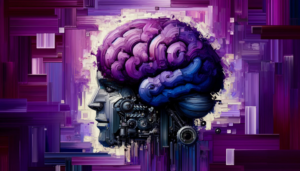
Brainstorming on Your Digital Twin Outcome
The first step in developing a digital twin is to clearly define the objective and envision the result. This involves understanding what you want the digital twin to achieve. Are you looking to enhance operational efficiency, reduce downtime, or optimize performance?
For instance, if the digital twin is for a manufacturing process, the objective might be to reduce waste and increase production speed. The result should be a detailed visual and operational replica of the manufacturing line that lets operators and managers test changes and predict outcomes in a virtual environment.
Usage of Your Digital Twin
Consider how the digital twin will be used. Will it be used for real-time decision-making, long-term strategic planning, training purposes or something else?
The use case will significantly influence the design and functionality of the digital twin. For example, a digital twin used for training may require interactive elements and the ability to simulate various scenarios, while one used for efficiency might focus on integrating real-time data and predictive analytics.
Elevating Digital Twin Solutions: The Nebul Advantage
Implementing a robust digital twin solution requires the optimal integration of NVIDIA GPUs, networking, storage, and software, alongside the right strategic partner. As a certified NVIDIA solution provider and Cloud Service Provider, Nebul stands at the forefront of delivering High Performance Computing (HPC) solutions, whether on-premises or within our secure private cloud infrastructure.
Nebul’s engineering team has over 25 years of experience in building high-performance digital simulation solutions for large enterprises, we bring unparalleled experience to the table.
Our European Private AI architecture and principles ensure full compliance with EU regulations, while our EU Accelerated Business Cloud delivers complementary infrastructure, seamlessly supporting digital twin solutions for any type of application.
Nebul’s extensive experience, strategic partnerships, and comprehensive AI infrastructure ecosystem significantly reduce deployment risks.
We ensure superior TCO (Total Cost of Ownership) , ROI Return on Investment, and security, guaranteeing that your project is executed and delivered with speed and precision.
Nebul offers a holistic infrastructure and software solution, available on-premises, in our private cloud, and across public cloud environments, tailored to meet the diverse needs of your enterprise.
By partnering with Nebul you’re enabling your organization to harness the full potential of state-of-the-art Digital Twin technology and drive your business into the future with confidence.
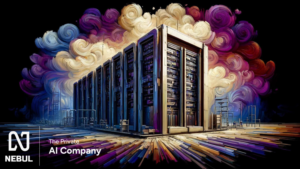
Nebul is an officially recognized NVIDIA DGX, HGX and OVX Solution Provider, fully certified and qualified to deliver NVIDIA solutions in cloud and on-premises.

